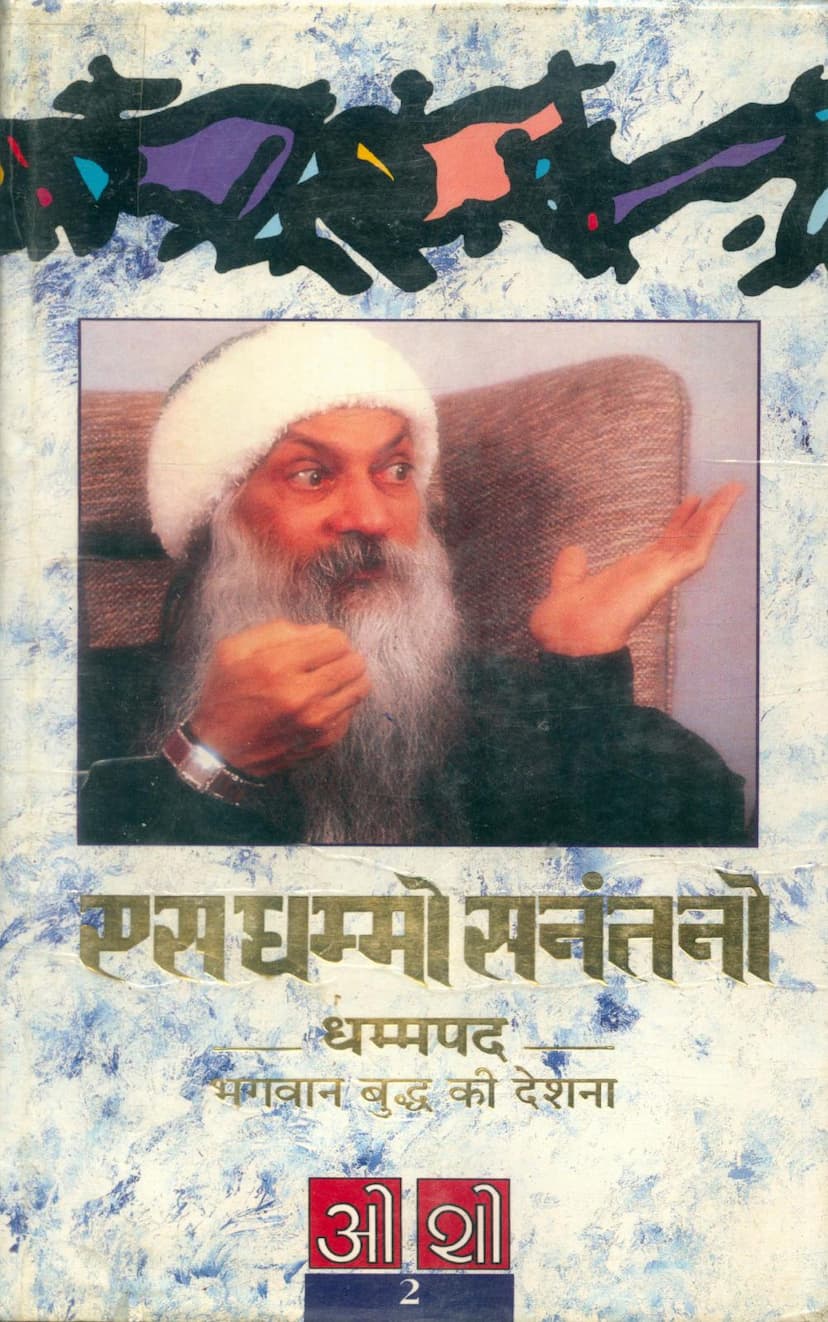Dhammapada 02
Added to library: September 1, 2025

Summary
Here's a summary of the provided Jain text, "Dhammapada 02" by Osho Rajnish:
This book, "Dhammapada 02," is the second volume of Osho's ten discourses on the Dhammapada, the teachings of Lord Buddha. The title, "Es Dhammo Sanantano," signifies "This is the Eternal Dharma."
The book is compiled by Swami Krishna Vedant and Ma Prem Kalpana, edited by Swami Yog Pratap Bharti and Swami Anand Satyarthi, and designed by Ma Prem Prarthana. It was published by Rebel Publishing House in Pune, India, with a copyright held by Osho International Foundation. The special edition was released in December 1991.
Core Themes and Osho's Interpretation:
Osho presents Buddha's teachings from the Dhammapada not just as commentary, but as an unfolding of his own profound wisdom and insight. He sees Buddha as a catalyst for an inner revolution, a "chiti-kranti" (consciousness revolution), which is crucial for modern humanity. Osho emphasizes that Buddha, like other great mystics such as Krishna and Mahavira, represented a pivotal moment in human consciousness.
Key Concepts Explored in the Discourses:
The book delves into various facets of spiritual seeking and understanding, often through interpreting specific verses (sutras) of the Dhammapada. Some of the central ideas include:
- The Nature of the Mind: Osho extensively discusses the mind, its fickleness, and the difficulty in controlling it. He likens the mind to a wild horse or an untamed river, which needs to be brought under conscious control through practices like meditation. The goal is to make the mind a servant, not a master, of consciousness.
- The Master-Servant Relationship within: Osho draws parallels with the Bhagavad Gita, where Krishna is the charioteer and Arjuna the charioteer. He argues that in our lives, the lower, unawakened self (Arjuna) often tries to be the driver, while the higher consciousness (Krishna) is relegated to the passenger seat. The spiritual path involves reversing this, allowing higher consciousness to guide.
- The Illusion of External Reality: Osho stresses that our perception of the external world is a projection of our inner state. If we are chaotic within, the world appears chaotic. If we bring order within, the external world can appear more ordered or less disturbing.
- The Importance of Presence and Awareness: The essence of Osho's message is about living in the present moment, being aware, and not being lost in the past or future. The Dhammapada verses are presented as tools to cultivate this awareness.
- The Transformation of Negativity: Osho explains that negative emotions like anger, greed, and lust are not to be suppressed but understood and transformed. He uses the analogy of alchemy, where base metals can be transmuted into gold. Similarly, negative energies, when understood and channeled with awareness, can become powerful forces for spiritual growth.
- The Path vs. The Goal: Osho often highlights that the journey itself is the destination. The focus should be on the path, on the present moment, rather than constantly striving for a future goal, which can itself become an obstacle.
- The Nature of Truth and Reality: Truth is not to be found in scriptures or dogma but through direct experience and inner realization. Osho encourages skepticism and investigation rather than blind faith.
- The Art of Living Authentically: The discourses emphasize living authentically, without pretense or societal conditioning. This involves accepting oneself, including one's flaws, and transforming them through awareness rather than repression.
- Paradox and Transcendence: Osho often uses paradox to jolt the listener out of their conditioned thinking. He suggests that by embracing contradictions, one can move beyond dualistic thinking towards a more holistic understanding of reality.
Osho's Unique Approach:
Osho's discourses are characterized by their vibrancy, humor, and directness. He uses contemporary language and analogies to make ancient wisdom accessible and relevant to the modern seeker. He aims to awaken the reader to their own inner potential and to the possibility of total transformation.
Conclusion:
"Dhammapada 02" by Osho is a profound exploration of Buddha's wisdom, presented in a way that invites the reader to embark on their own inner journey of discovery and transformation. It's not just a book about Buddha, but a guide to becoming one's own Buddha.